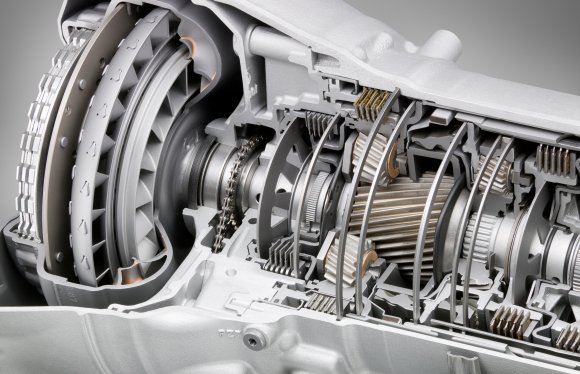Automatic this, automatic that.. this is the era of automatic! Everyone wants everything automatic. Why? Because we are lazy! And if “Need is the mother of inventions”, then “Laziness is the father of inventions!” Coming to our topic, Automatic transmissions. Yes, who doesn’t want it? Because they are smoother, faster & super-easy.
So today we will be learning how automatic transmissions work and everything else you need to know about them!
Automatic transmissions are nothing but mutiple epicyclic geartrains connected together.
Epicylic geartrains are completely different than the normal ones like sliding or constant mesh gearbox which we generally come across. Epicyclic geartrains consist of gears called as the sun, ring OR annular gear & the planetary gears.
Various gear ratios are obtained by holding any of the gear stationary and supplying input to the other.
Why do we need Automatic transmissions ?
- In densely populated cities with heavy traffic, its almost better never to take of your hand over the gear selector.
Hence, to reduce driver fatigue automatic transmissions are must! - Since they are electronically controlled by algorithms, they prove to be fuel efficient.
- They are easy to operate since you just have to select 1 mode among Neutral, Forward & Reverse.
- Automatic transmissions offer smoother travel experience than manual transmissions.
- They are quieter than manual transmissions.
Parts in an Epicyclic geartrain –

Sun gear –
The sun gear is a gear located at the centre of the whole setup and is always meshed with the planetary gears.
Ring or Annular gear –
Ring gear is the biggest gear in terms of size in whole geartrain. It acts as a drum or a case for all the others gears. This is the only gear which has internal teeth.
Planet gears –
Planet gears are small gears which lie between the ring gear and the sun gear and is always meshed with both of them. There are generally 3 or 4 planet gears in a set and all are connected via a common carrier.
Carrier –
The carrier is just a common metal arm which is connected to all the planet gears.
Brakes and Clutches –
In automatic transmissions, multiple clutches are used to give input to different gears and let power follow the path we desire.
How automatic transmissions work ?
Here is a single stage epicyclic gearbox where we can obtain only 2 speed ratios i.e shift only upto 2nd gear and reverse mode.
For better understanding, lets consider 3 cases & jump right into its working!
1st gear –

The engine power is supplied to the sun gear in this case. An electronic control system engages & the ring gear is held stationary via a band brake. An actuator helps in applying brake which is also controlled by an automatic electronic control system.
The animation explains how the planet gears are free to move between the stationery sun gear and rotating ring gear. Thus the only remaining parts are planets and the planet carrier becomes the output.
Input – Sun gear
Output – Carrier shaft
Approx gear ratio – 3.1
2nd gear –

The nature of ring and sun gear exactly gets opposite in case of 2nd gear. Here, the sun gear is kept stationery and ring gear is given power. Again, the free motion of planet gears make the carrier shaft rotate with more RPM than that during 1st power shift.
Input – Ring gear
Output – Carrier shaft
Approx gear ratio – 1.8
If you notice carefully, in both the cases ,the carrier shaft remains the output but gives different speed. This is because of the radial distance between the centre of ring gear and points of rotation of planet gears!
Reverse gear –
For obtaining reverse motion, the planet arm is kept stationery. Power through engine is made to flow from sun gear. The planet gears rotate in the opposite direction as usual since they have external teeth.
But, since there are internal teeth on ring gear, the ring gears rotate in the same direction of planets i.e opposite of sun gear & reverse motion is achieved.
Input – Sun gear
Output – Ring gear

Now in an automatic transmission of a vehicle, there are 5 or more than 5 gear ratios available. Hence this is achieved by connecting 3 such planetary sets in series.
You must have observed that different gear ratios are obtained by giving the input power to different parts of the planetary geartrain. As mentioned earlier, this is done by electronically controlled clutches and brakes. In an automatic transmission, there will be multiple clutch and brakes since there will multiple planetary sets. Power is made to flow through desired gears by combination of multiple band brakes and clutches. And believe that’s a whole another level of mess and complexity! ? Its difficult to understand even after watching a video.. here it is

